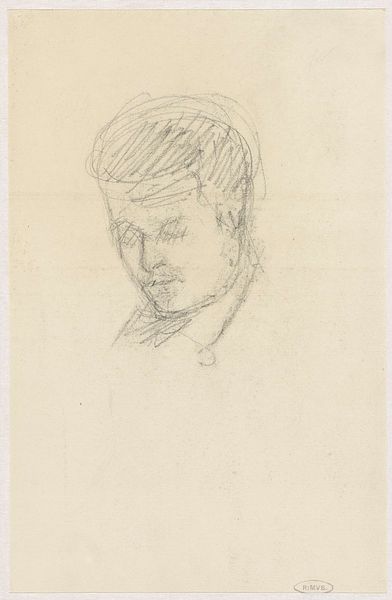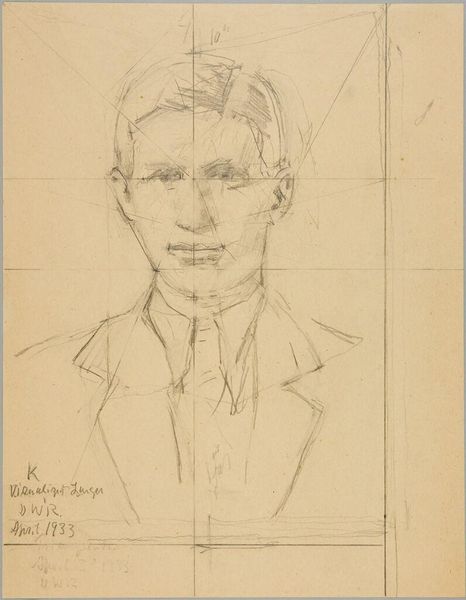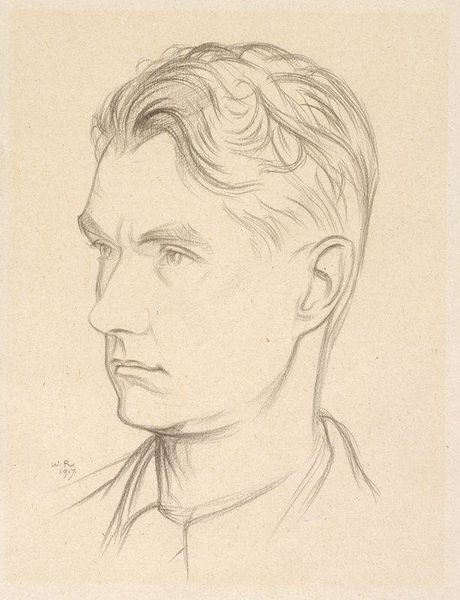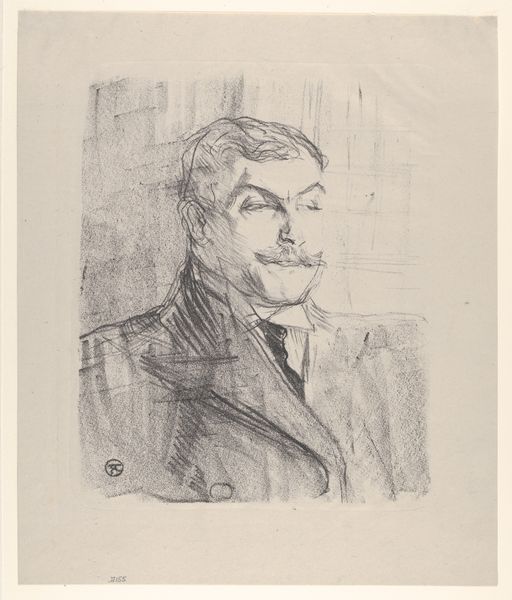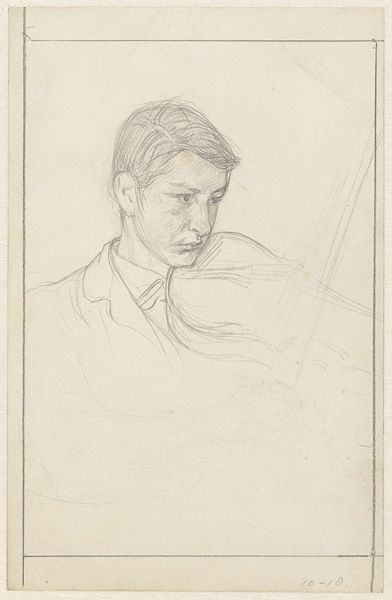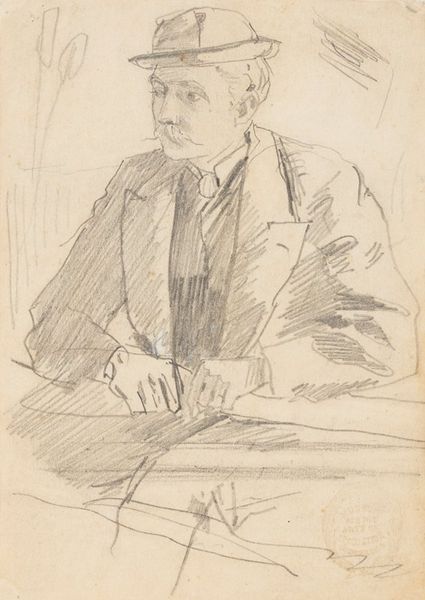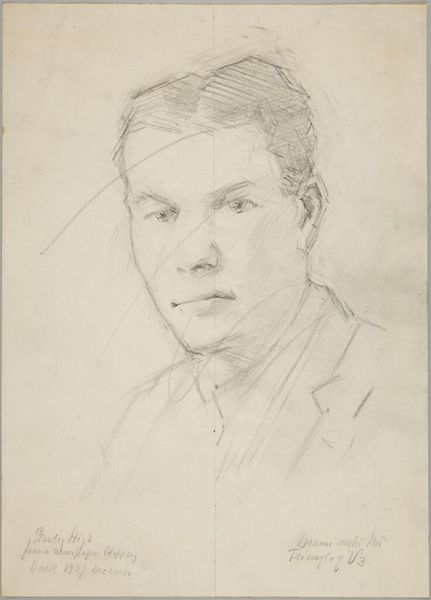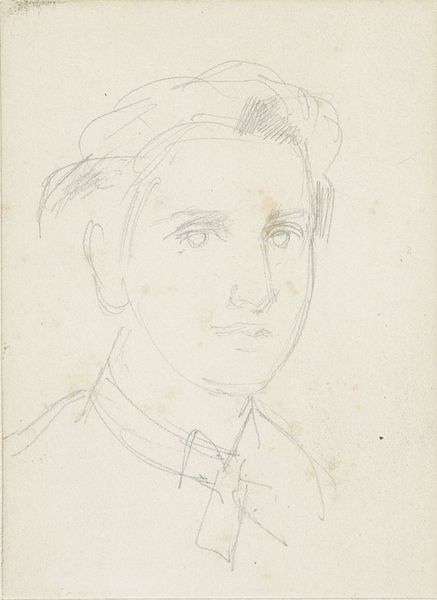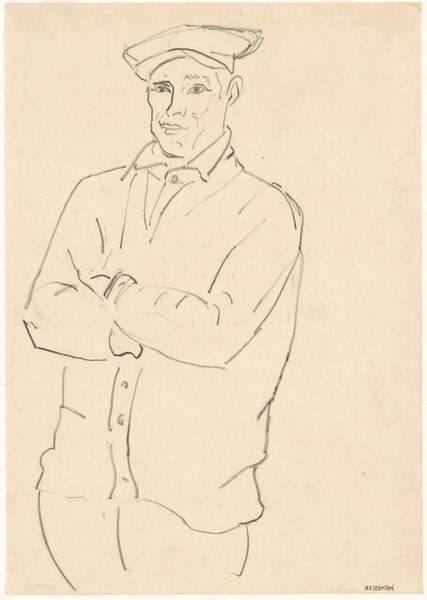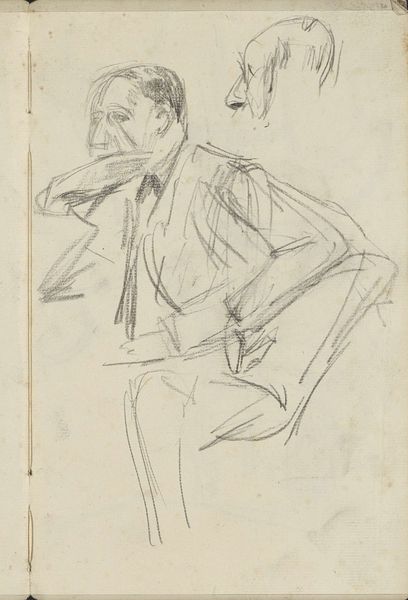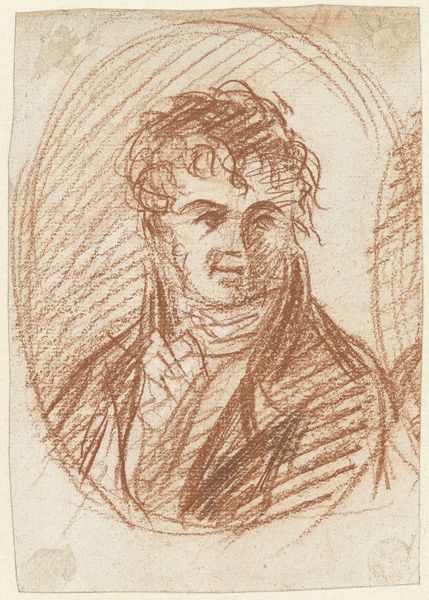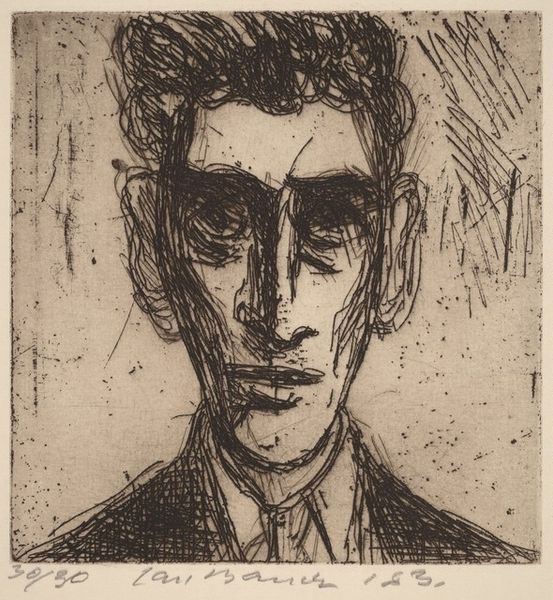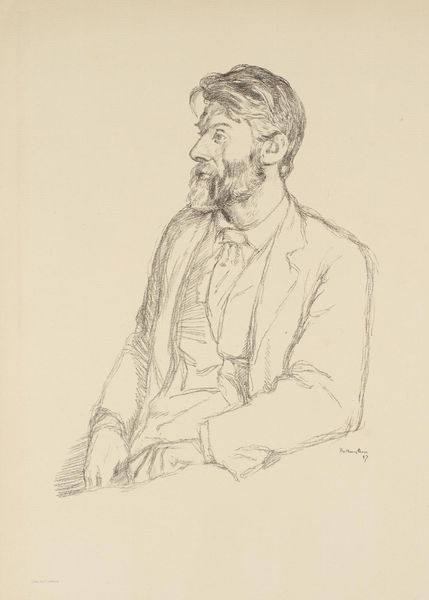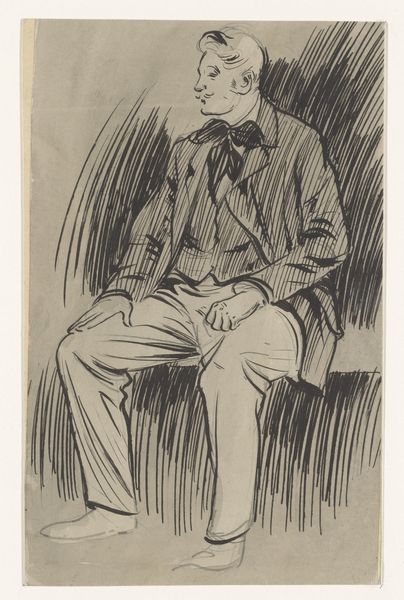
drawing, print, etching, graphite
#
portrait
#
pencil drawn
#
drawing
# print
#
etching
#
figuration
#
pencil drawing
#
graphite
#
portrait drawing
#
realism
Dimensions: plate: 18.7 x 12.7 cm (7 3/8 x 5 in.) sheet: 30.5 x 23.8 cm (12 x 9 3/8 in.)
Copyright: National Gallery of Art: CC0 1.0
Curator: This is Jacob Kainen's "Eugene," created in 1946 using etching and graphite on paper. Editor: The hatching really leaps out—it's incredibly expressive! There's a tension between the crisp lines defining the face and suit and the almost frantic scribbles behind him. Curator: Yes, let's examine that interplay of line and texture more closely. Notice how Kainen employs a dense network of fine lines to model form, particularly around the eyes and cheekbones, lending the figure a distinct three-dimensionality. Editor: Beyond the technique, that intensity translates into the subject’s gaze, too. I wonder, what sort of archetype does "Eugene" represent? Is this a portrait of someone burdened by the postwar era, perhaps? Curator: Potentially. The subject’s attire suggests a man of the time—the suit and tie being markers of professional identity, and this adds layers of interpretation that are certainly welcome to examine. But from my perspective, those formal components allow for balance against what could read as an uncomfortably stark expression. Editor: I'm struck by how the artist chose to include his name so explicitly in the picture; the signature’s not at all discreet. Curator: That could signify a direct claim on the artwork, further emphasizing Kainen's control over the etching process and asserting his presence within the composition itself. It reminds us the process by which it came to life is as important as the identity of the subject, “Eugene.” Editor: In that context, then, the lines might signal not only character and the person they depict but also become almost seismographic readouts of the maker’s process. It's less about a realistic depiction and more about what it takes to create the art object itself. Curator: Precisely! The varying line weights and densities across the plane serve to flatten the portrait and make the viewer more aware of its flatness. Kainen manipulates graphic convention to highlight and investigate representation as its very topic. Editor: I see. This re-framing helps to better consider "Eugene’s" larger impact in its time and allows a means to appreciate not just who it is, but the broader symbolic nature of postwar experience made evident via such techniques. Curator: Indeed. Understanding Kainen's compositional decisions unlocks those greater contexts to consider with more meaning, and maybe opens "Eugene's" persona up, too.
Comments
No comments
Be the first to comment and join the conversation on the ultimate creative platform.
